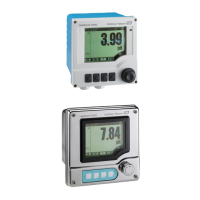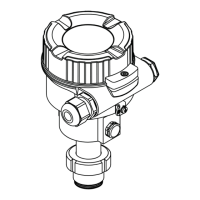Solicap M FTI55, FTI56 Commissioning
Endress+Hauser 73
6.4.3 Setting the switch point adjustment
Note the following when selecting switch point adjustment:
• If only one calibration (empty or full) was carried out, and if buildup forms on the rod probe while
the probe is in operation, the device may no longer respond to changes in level. A switch point
adjustment compensates for this condition and ensures that you obtain a constant switch point
again.
• For media that do not have a tendency to build up, we recommend a setting of 2 pF, as the probe
is most sensitive to changes in level at this setting.
• For media with heavy buildup (e.g. plaster), we recommend using probes with active buildup
compensation and using the setting 10 pF.
6.4.4 Setting the switching delay
!
Note!
• The switching delay causes the device to signal the level limit after a delay.
This is particularly useful in tanks with turbulent medium surfaces caused, for example, by the
filling process or by collapsing mounds.
By doing so, you ensure that the filling of the tank does not end until the probe is continuously
covered by the medium.
• A switching delay that is too short may, for example, cause the filling process to be restarted as
soon as the medium surface settles.
"
Caution!
If too long of a switching delay is set, this can cause the tank to overflow.
DIP switch: D Function
E
Switch point adjustment: 10 pF
(for media with heavy buildup, e.g. sewage sludge)
E
Switch point adjustment: 2 pF
(for media that do not cause buildup e.g. water)

